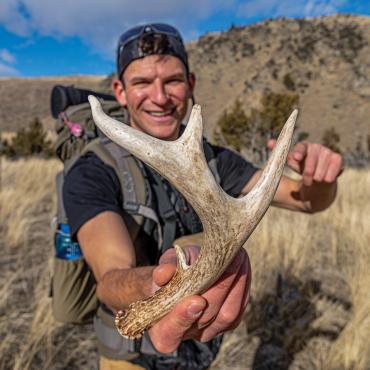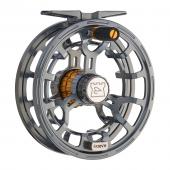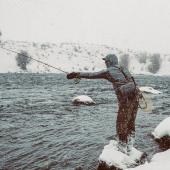Off the Record
The spoils of secluded waters.
It all began with a rumor, as most memorable fishing trips do. A secluded, mountain lake holding 26-inch cutthroat. The regional biologist—or so the story goes—had stocked it with about a hundred yearling fish several years back but “failed” to enter them into the stocking records; thus creating a secret honey hole for his own enjoyment. Supposedly, most of the fish had died off, but those that remained had reached gargantuan proportions.
Our information was secondhand—or maybe third. There was no way of knowing for sure. Supposedly, after a few too many drinks at a New Year’s party, the biologist had let his secret slip. We’d be the first ones there, come spring.
Half an hour passed without so much as a look at our offerings.
The hike in was grueling. Eight miles, and nearly 4,000 feet of elevation gain into the headwaters of a remote drainage. The lake itself, as we discovered, was hardly a lake at all, but rather a glorified puddle. An angler could walk the perimeter in about ten minutes, and there was no defined inlet nor outlet. A handful of trickles fed the pond from various sides, and a subterranean outflow directed water under the lake’s earthen berm and sprouted from a small spring about a hundred yards below. We’d be “shootin’ fish in a barrel,” as they say.
Giddy with anticipation, we rigged our rods and tied on hot-head leeches to cut through the murky water and hopefully turn some heads. Taking positions on large boulders, we began to ply the water. For such a small pond, it was shockingly deep—20 or 30 seconds, on average, for our leeches to hit the bottom and our lines to go slack. Then we’d start stripping.
Half an hour passed without so much as a look at our offerings. Then an hour. Finally, Isaac broke the silence—“Fish! Fish! Fish! It’s a monster! It’s following… come on… come on… eat it!” And then, a long, painful wail: “Nooooo…” The leviathan returned to the depths as quickly as it had appeared.
Although our hot tip had not yielded a single fish, it had been a productive day in other ways.
“It was a giant,” Isaac recounted. “25 inches, easy. Its head was the size of a grapefruit!”
The rest of the afternoon was devoid of action. We took naps on the bank, changed out flies, and circumnavigated the lake several times over. Eventually, we called it a day. On the hike out, we pondered how many other water bodies might be out there, off the official stocking records. At least a handful, we concurred, all begging to be discovered, fished, and explored. And one of them would certainly put a few fish in the net.
Would we be making a return trip to this particular lake? Probably not. Although our hot tip had not yielded a single fish, it had been a productive day in other ways—scenery, camaraderie, and a trek into a mountain drainage that would’ve otherwise flown under our radar. All said, it was a reminder to get off the beaten path, to overlook the more well-known lakes and trout streams in southwest Montana and to find new waters—ones that aren’t named on maps and in fishing guidebooks (though they can be great places to start, especially for novice anglers or those new to the area). After all, who knows—there may be a grain of truth to the rumors of trophy cutties lurking in a remote mountain lake or giant browns inhabiting a local irrigation ditch. There’s only one way to find out.











